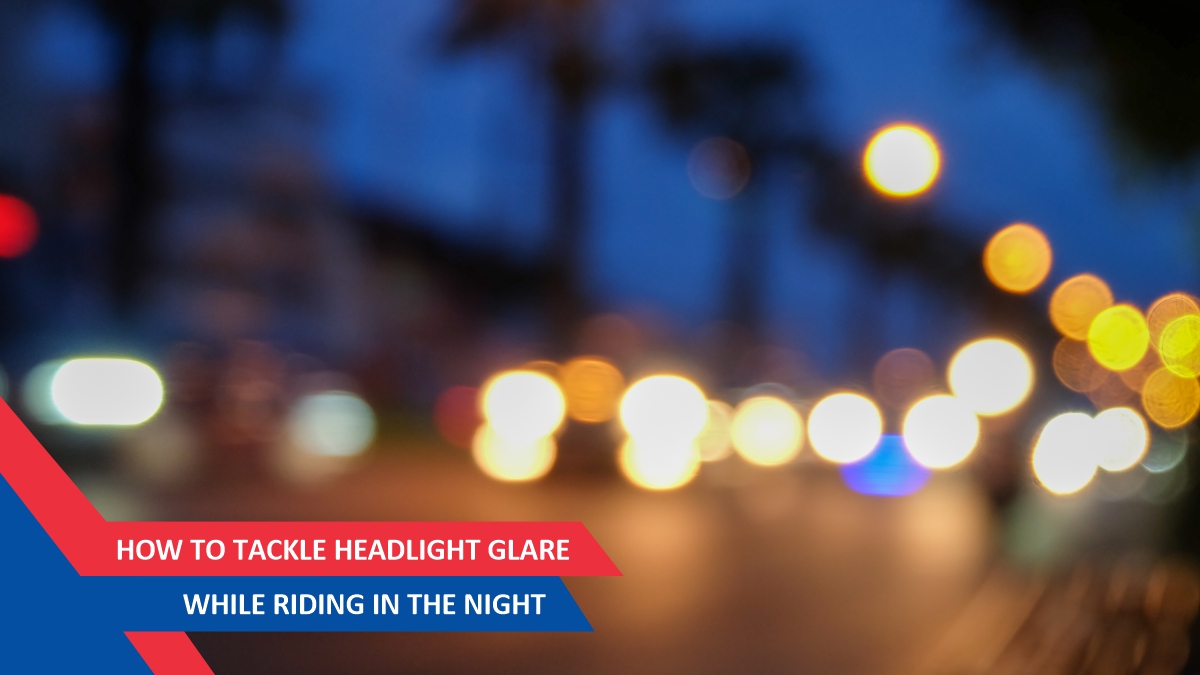Riding in the dark through a deserted, windy road can be a therapeutic experience for a seasoned motorcyclist. On the other hand, navigating your way through the night on a busy highway, with vehicles from the opposite direction blinding you with their headlight glare, can be hazardous. Many riders avoid night riding entirely, as they don't know how to deal with the blinding glare from the traffic. A lack of training and awareness among Indian road users about the proper use of high/low beams only worsens this problem. While your vision while riding in the night can never be as good as daytime, here, in this article, we share a few tips that will help you deal with the menace of headlight glare effectively.
Check your eyesight regularly
While it is more of a prerequisite than a tip, it is crucial to know whether you could rely on your vision before you go out riding in the challenging night conditions. When there is no natural source of light for you to see ahead, it becomes tough to spot a potential hazard. No matter how powerful or intelligent your vehicle’s headlights are, they are good only if your eyes are functioning optimally and see things clearly as they should. Ensuring that your eyesight is perfect in all kinds of lighting conditions is essential before you decide to swing a leg over your motorcycle and set out chasing the moon.
Look away
Many road users, especially in India, have no awareness about how annoying and hazardous their headlights' high beam could be for people travelling in the opposite direction. While there are some ways to deal with this issue, be mindful that their effectiveness improves only with practice. The best way to tackle the headlight glare and the momentary blindness it causes is by not looking directly into the light source. In Right Hand Drive countries like India, you should move your vision slightly towards the left when you see oncoming traffic with a high beam engaged. Turn your focus slightly away from the headlights of the opposing vehicle, and use your peripheral vision to gauge its position on the road. While doing this, use the markers on the road, especially the white lines on the flanks to guide you. Use discretion while practising this, ensuring your own and other road users' safety at all times.
Ride slow, keep left
Going slow is one of the most reassuring ways to stay safe when you are not too comfortable riding in the dark. If it is a multi-lane highway, take the leftmost lane to reduce your exposure to the intensity of the light from the opposite traffic. Look slightly to the left, and follow the line markers. Ensure that your two-wheeler's front and rear lighting system functions appropriately to make yourself visible for vehicles coming from behind. Wear riding gear with a reflective coating. Don’t ride too slow, lest you might get rear-ended by vehicles approaching from behind at high speed.
Use a high-quality helmet visor, and keep it clean
If you wear spectacles, you know how irritating those finger smudges can get. The vision becomes blurry, and one is forced to take a piece of clean cloth out to clear the glasses. Like spectacles, if the visor is dirty and splattered with unwanted elements, the oncoming headlight beam will get distorted, resulting in the glare getting worse. Ensure that your helmet visor is a high quality, scratch-resistant unit, with appropriate coatings to dispel dust and water. Also, while riding in the night, make sure you clean it periodically to prevent dust, grime and bug splatters from settling down.
Adjust the rear-view mirrors
Sometimes, the vehicles following you can also dazzle you through your motorcycle’s Rearrear-view mirrors. Motorcycle mirrors do not come equipped with day and night modes like most cars do. You can correct their angle in a manner where the reflection of the lights from the trailing vehicle is somewhat reduced without affecting visibility. While there is no setting where you would get rid of the glare from the trailing traffic entirely, adjusting it in a way where the glare doesn't hit your eyes directly at all times can provide partial relief.
Consult your doctor for anti-glare glasses
To start, not all glasses are recommended for riding in the night. Glasses with a yellow/amber tint, or with polarised UV blocking treatment, touted as driving or riding glasses, are a strict no-no for riding in the night. These glasses obstruct light passage, and some studies suggest that they may cause more harm than good. However, some advancements in optometry, like anti-glare or anti-reflective (AR) coatings on eyeglasses, can improve night vision for some individuals. One should use such glasses only after consulting their ophthalmologist and after duly testing them in a safe environment.


